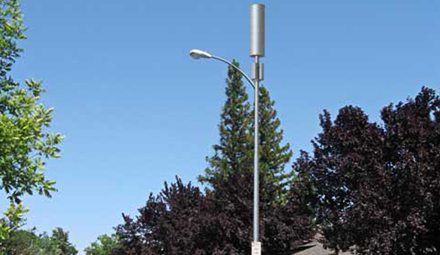Small cell construction a priority for Crown Castle
Network infrastructure provider Crown Castle released its second quarter results at the end of last week. After a strong quarter, the company, which leases out more than 40,000 cell towers and other network infrastructure to carriers like Verizon and AT&T, reported a net income of $246 million, compared to $180 million during the same period a year ago.
Calling the quarter “terrific,” Crown Castle’s CEO Jay Brown credits strong growth in demand for towers, small cells and fiber assets related to 4G and 5G activity. He expects current activity levels to continue as carriers respond to an increase in data traffic on their 4G networks, as well as focus on the deployment of 5G networks.
Brown commented further on what to expect with the transition from 4G to 5G, saying, “I would suspect we’ll see significant amendment activity at sites where [carriers] go out and deploy additional antennas and lines and amend their existing equipment to make it 5G-ready.”
Brown believes also that carriers will invest not only in upgrading their existing equipment, but also in offloading some of that traffic onto the small cells in dense urban environments. “Just like we saw in 4G,” he stated.
According to the report, Crown Castle’s site rental revenues grew approximately 6 percent, or $69 million, from second quarter 2018 to second quarter 2019, inclusive of approximately $66 million in Organic Contribution to Site Rental Revenues and a $3 million increase in straight-lined revenues.
During the quarter, Crown Castle’s capital expenditures were $518 million, comprised of $10 million of land purchases, $30 million of sustaining capital expenditures, $475 million of revenue generating capital expenditures and $4 million of integration capital expenditures.
The company paid common stock dividends of $1.125 per common share during the quarter, an increase of approximately 7 percent on a per share basis compared to the same period a year ago.
Crown Castle increased the commitments under its Senior Unsecured Revolving Credit Facility to $5.0 billion and extended the maturity date on its Senior Unsecured Credit Facility to June 2024.
While the company experienced higher levels of tower activity than expected, Brown emphasized the importance of small cell construction. “We are constructing small cells for our customers as they invest in their current networks while beginning 5G deployments,” he said, adding that he thinks “the need for small cells [will] grow pretty significantly over the coming years as networks transition from 4G to 5G.”

